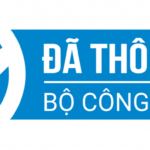In the pursuit of optimal workout efficiency, individuals often look for strategies that not only enhance their physical capabilities but also facilitate personal progress. High-Intensity Interval Training (HIIT) combined with core strength exercises offers a powerful approach to achieving fitness objectives.
Setting clear goals is crucial for those aiming to transform their fitness routine. By incorporating HIIT and core workouts, you can create a regimen that not only challenges you but also tracks your improvements over time. As you focus on these elements, you’ll notice significant advancements in your overall performance.
Whether you’re a seasoned athlete or a newcomer to fitness, integrating these techniques can elevate your routine. With intentional training and a commitment to personal development, every workout becomes an opportunity for growth and achievement.
Choosing the Right HIIT Exercises for Optimal Results
Selecting appropriate exercises is crucial for maximizing the benefits of HIIT (High-Intensity Interval Training). Your choice should align with your fitness goals and overall workout strategy. Here are some key points to consider:
- Assess Your Fitness Level: Choose exercises that match your current abilities. If you’re a beginner, start with low-impact movements and progress to more intense options.
- Define Your Goals: Consider what you want to achieve through your workouts. If fat loss is your objective, prioritize exercises that engage large muscle groups to elevate heart rate.
- Incorporate Variety: Mixing different types of exercises helps prevent boredom and ensures comprehensive development. Include strength, cardio, and agility movements.
- Focus on Compound Movements: Exercises like burpees, squat jumps, and push-ups engage multiple muscle groups simultaneously, enhancing efficiency during interval training.
- Modify as Needed: Don’t hesitate to adjust exercises to suit your comfort level. This may involve reducing intensity or modifying movements for safety.
- Time Your Intervals: Experiment with varying interval lengths. For instance, you can alternate between 20 seconds of intense effort and 40 seconds of rest or lower intensity.
- Listen to Your Body: Pay attention to how your body responds during workouts. Modify or substitute exercises if you experience pain or discomfort.
By thoughtfully choosing your HIIT exercises, you can achieve optimal results while working toward your specific fitness goals. Remember to combine this with strategic goal setting to enhance your overall training effectiveness.
Incorporating Core Strength Movements into Your Routine
Integrating core strength movements into your workout is a strategic approach that enhances overall fitness. These exercises are beneficial for anyone engaging in interval training. A strong core provides stability and supports efficient movement patterns, which are crucial for achieving personal progress and maximizing your performance.
Begin by setting clear goals around your core strength. Whether you’re looking to improve your endurance, power, or overall stability, identifying these objectives helps tailor your routine. Incorporate exercises like planks, Russian twists, and bicycle crunches into your HIIT sessions. These movements not only strengthen your core but also elevate heart rate, making your workout more dynamic.
Time management is key for those with busy schedules. You can pair core exercises with their HIIT components to save time while still gaining the benefits of strength conditioning. For example, perform a HIIT exercise followed by a 30-second plank. This keeps the intensity high while targeting multiple muscle groups.
Remember to focus on form and control, which will lead to improved results over time. Integrating core strength into your routine can transform your workouts and significantly impact your overall fitness. For more fitness tips and ideas on enhancing your training, check out https://hiitcorefitness.com/.
Timing Your HIIT Workouts for Revved-Up Metabolism
Scheduling your HIIT workouts strategically can significantly enhance workout efficiency and boost your metabolism. Understanding when to train helps in maximizing personal progress and achieving fitness goals more effectively.
Morning sessions can be ideal for many, as they kick-start your metabolism early in the day. Engaging in HIIT first thing releases endorphins, setting a positive tone for the hours ahead. Furthermore, morning workouts often create a structured environment for time management, leaving less room for distractions later in the day.
However, if you’re more energized in the evenings, consider incorporating HIIT sessions into your late-day routine. Studies suggest that metabolism can peak hours after a HIIT workout, meaning evening sessions may allow you to burn calories more efficiently through the night.
Regardless of your chosen time, consistency remains key. Regular scheduling not only supports habit formation but also aligns with personal goal setting, ensuring that you stay committed to your objectives. Pay attention to how your body responds at different times; this is crucial in fine-tuning your approach and maximizing benefits.
To further enhance results, integrate short bursts of high-intensity work followed by adequate rest. This method may lead to improved metabolic responses, allowing for better calorie burn during and after workouts. Utilize fitness tips to tailor your HIIT structure, focusing on intervals that challenge but also accommodate your individual fitness level.
Ultimately, the best timing for your HIIT workouts is one that fits your lifestyle while keeping you motivated. By managing your time wisely, you can create a sustainable routine that promotes lasting fitness and metabolic improvement.
Tracking Progress and Adjusting Intensity for Improvement
Monitoring your advancement in HIIT and core strength training plays a pivotal role in enhancing workout efficiency. Keeping a record of your routines, including the number of repetitions, duration, and intensity levels, allows for clear insight into your personal progress.
Utilizing tools such as apps or simple journals can make tracking straightforward and effective. By regularly assessing your metrics, you can identify trends and make informed adjustments to your regimen.
Intensity modification is key to continuous improvement. If your workouts become too easy, increasing the difficulty through shorter rest periods or more challenging exercises can foster strength conditioning. Conversely, if you find yourself fatigued or unable to maintain proper form, consider reducing the intensity to prevent injury.
Goal setting is fundamental. Establish both short-term and long-term objectives to guide your training. Whether aiming for higher endurance or increased strength, clear goals can enhance motivation and focus during sessions.
Time management is also critical in maximizing workout efficiency. Allocate specific days for HIIT and core exercises, ensuring adequate recovery while maintaining a consistent routine. Having a structured approach will enhance your ability to measure progress and adjust as needed effectively.
Incorporating gradual increases in workout intensity can lead to substantial improvements over time. Listen to your body and adapt your program accordingly for sustainable growth in your fitness journey.



